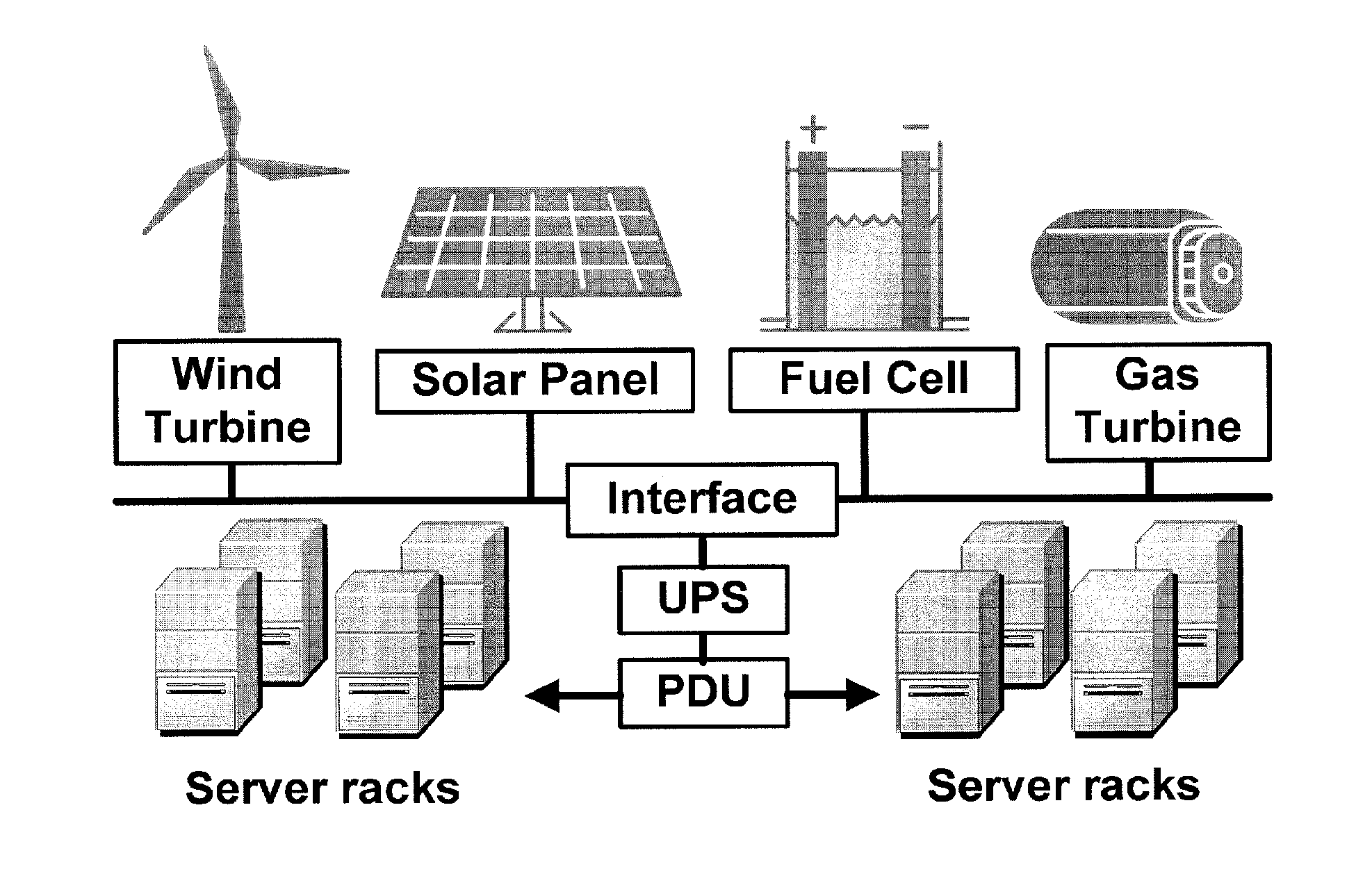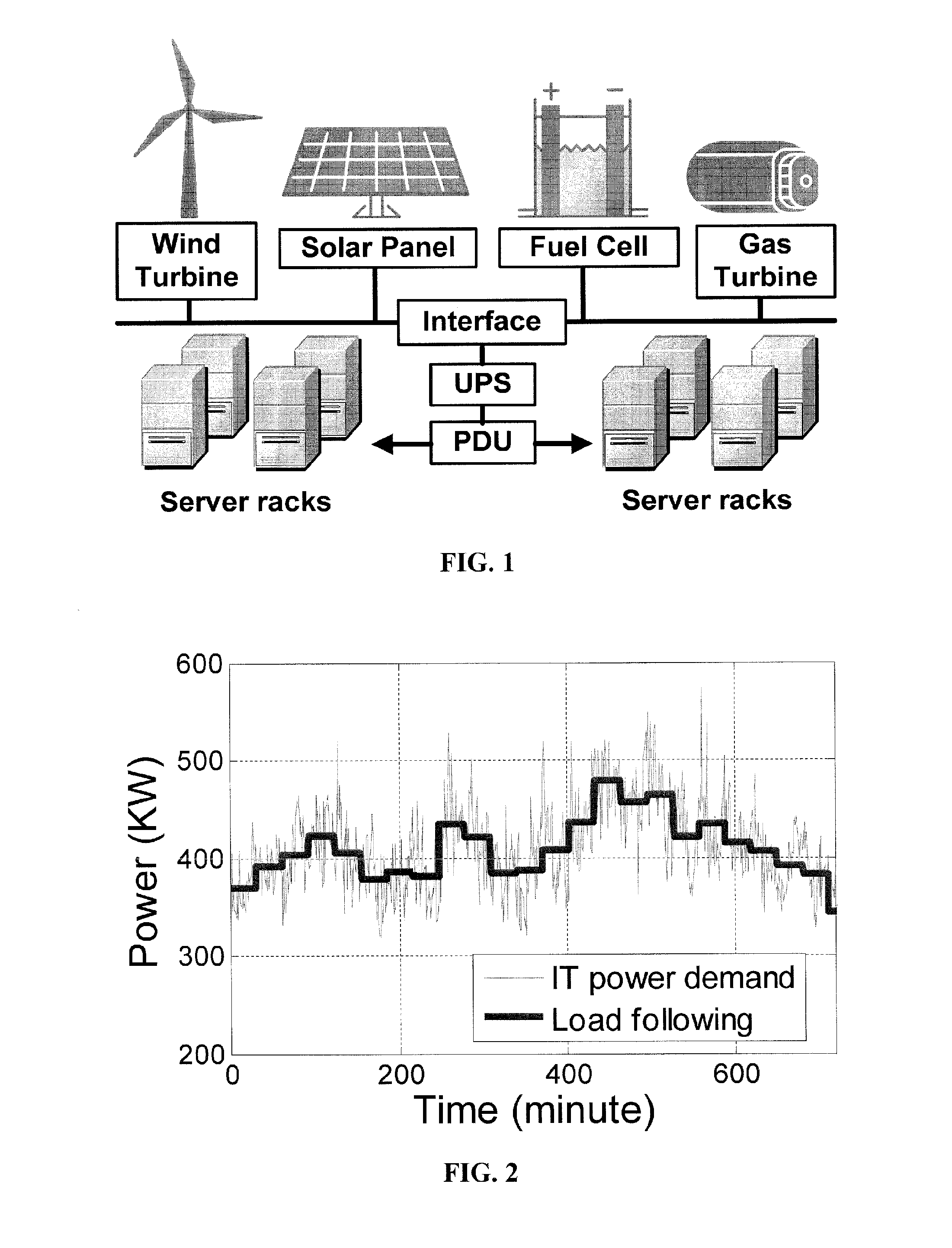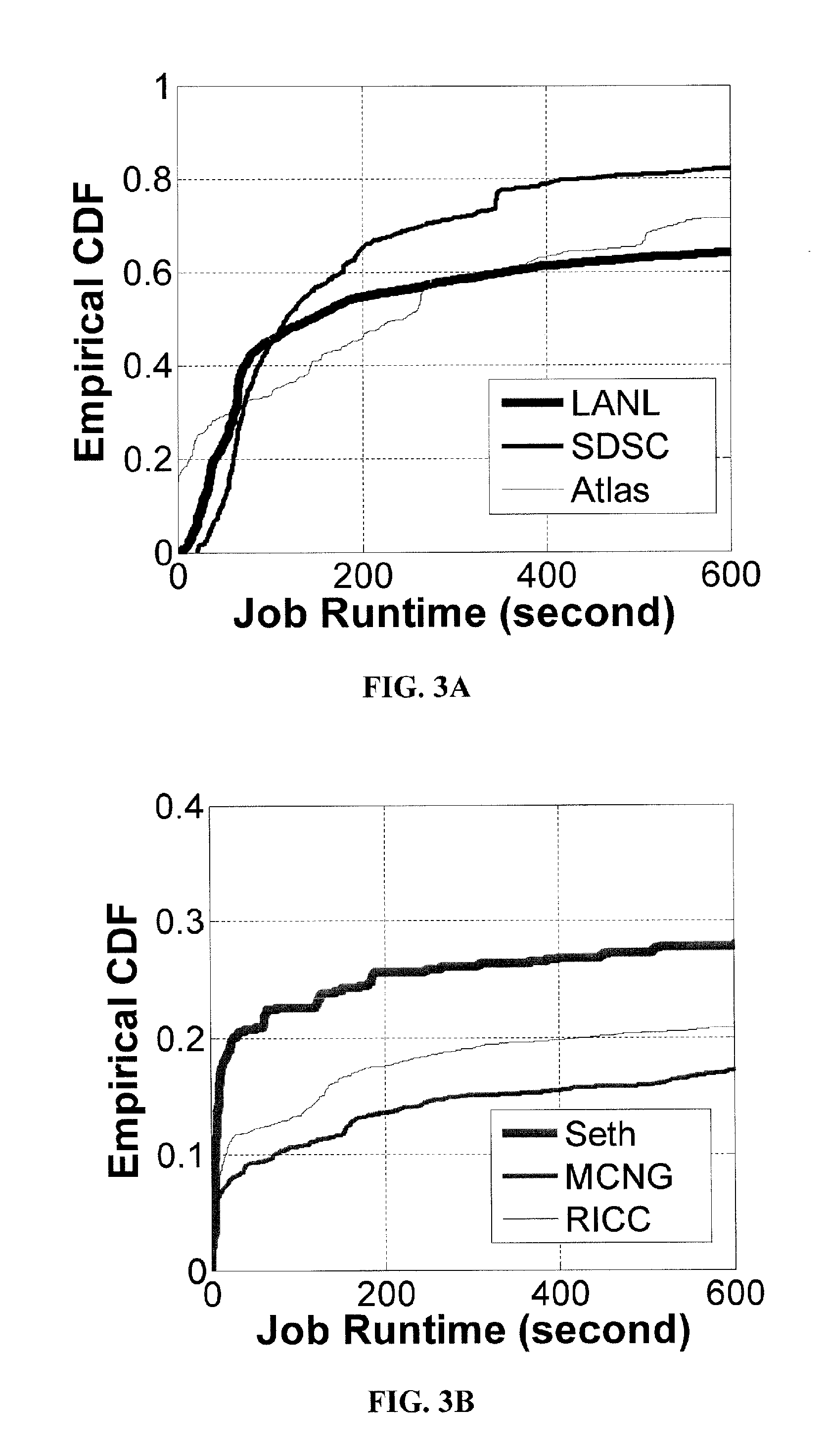Method and apparatus for power management using distributed generation
a technology of distributed generation and power management, applied in the direction of dc source parallel operation, emergency power supply arrangement, greenhouse gas reduction, etc., can solve the problems of increasing the total cost of ownership (tco), affecting the environment, and extending the turnaround time of jobs, so as to achieve sufficient performance, improve load following efficiency, and reduce carbon footprint
- Summary
- Abstract
- Description
- Claims
- Application Information
AI Technical Summary
Benefits of technology
Problems solved by technology
Method used
Image
Examples
Embodiment Construction
[0039]Embodiments of the invention relate to a method and system for power demand shaping (PDS) so as to manage power generation and use. Specific embodiments relate to data center power demand shaping to achieve high-performance low-overhead data center operation. Further specific embodiments can incorporate standard (utility power) energy sources, renewable energy sources, or a combination of standard (utility power) energy sources and renewable energy sources. Embodiments of the subject PDS techniques can incorporate trimming the data center load power so as to allow DG systems to follow the power demand efficiently and / or incorporate two adaptive load tuning schemes that can boost data center performance and enable near-oracle operation during power demand trimming process. To implement a cross-layer power optimization scheme, embodiments of the subject invention relate to a power management module that can reside between front-end distributed generation and back-end computing f...
PUM
 Login to View More
Login to View More Abstract
Description
Claims
Application Information
 Login to View More
Login to View More - R&D
- Intellectual Property
- Life Sciences
- Materials
- Tech Scout
- Unparalleled Data Quality
- Higher Quality Content
- 60% Fewer Hallucinations
Browse by: Latest US Patents, China's latest patents, Technical Efficacy Thesaurus, Application Domain, Technology Topic, Popular Technical Reports.
© 2025 PatSnap. All rights reserved.Legal|Privacy policy|Modern Slavery Act Transparency Statement|Sitemap|About US| Contact US: help@patsnap.com



